INDIA. Uttarakhand. COVID-19 has affected human life relentlessly and has caused catastrophes in every sector of human life – travel, medical, hospitality, etc. But it has also shown positive effects on the environment – particularly the flora and fauna. And this includes the wildflowers growing at higher altitudes in the Himalayas, particularly the Brahma Kamal and other kamals of the Saussurea family.
Also see: https://www.transcontinentaltimes.com/positive-effects-of-covid-19-on-the-environment.html
Reduced pollution encouraging rare flower blooms
Low levels of pollution have been reported from all over the Himalayas from lack of tourism as well as reduced local movement due to lockdowns. As a result, flowers have been reported to be blooming in their offseason, even after the monsoons.
The rare Brahma kamal, a type of thistle native to the Himalayas, grows at elevations between 4,000 – 5,000 meters. Recently it has been spotted blooming at lower altitudes of 3000 meters in Uttarakhand’s Chamoli district, and also in other parts of the state.
Transcontinental Times spoke to a few local residents of Wan, Uttarakhand, and also to a local conversationalist, Brijeshwar Singh, who were unanimous in their views. The absence of tourist activity during lockdown helped to reduce pollution. This helped the flowers expand their territory as well as their blooming season.
Also check: http://www.flowersofindia.net/catalog/himalayan-frame.html
The Kamals of the mountains
The Kamals of the mountains with a common generic name Saussurea, belong to the Cynareae tribe and are known as the thistles of the dicotyledonous family Asteraceae.
Varieties of flowers under the genus Saussurea include Brahma Kamal, Saw-wort or Snow Lotus, Fen Kamal, etc. and are native to the Himalayas. They bloom during mid-monsoon months amongst the rocks and grasses of alpine meadows, and along the sides of lakes and streams. These plants are extremely rare and are famous for their beautiful flowers as well as their usage in traditional and Tibetan medicine. All these species found in the cold mountain environments are restricted to high mountain ranges and are habituated to strong winds, intense cold, and perpetual snow.
Brahma Kamal (Saussurea Obvallata)
Locally known as Kon, Kapfu, or Vansembruu, Brahma Kamal is the holiest member of the family and is the state flower of Uttarakhand. It blooms during mid-monsoon (July-August). Flower heads are purple. Brahma Kamal, a perennial growing to 0.3 meters (1 ft.), is a helpful medicine to treat fevers, bone aches, intestinal ailments, coughs, and colds.
Also known as the Lotus of Brahma, this flower is considered the king of Himalayan flowers and is named after Lord Brahma – the Hindu god of creation. The flower is sacred to the locals and is mentioned in the Puranas. Associated with the birth of the Hindu god, Ganesha, it also appears in epics like the Ramayana and the Mahabharata. Brahma Kamal is a prized offering during pujas in the holy shrines of the state like Kedarnath, Badrinath, and Tunganath.
The rare flower, also known as Golden Lotus provides spiritual happiness to the person who is fortunate to see it. It is not easy to see the flower as it blooms in the late evening and withers quickly.
Kasturi Kamal (Saussurea Gossypiphora)
This flower grows at an elevation of 4300–5600 meters and is believed to guard against evil spirits. The flower has a strong fragrance similar to that of a Kasturi deer. Hence the oil extracted from the roots of the plant is used in high-grade perfumes and in the preparation of hair oil.
The Kasturi Kamal plant looks like a woolly snowball. The stem is stout, is 10–20 cm long with linear leaves. The flower heads, like disc florets compactly clustered at the top of the stem, bloom between July– September.
The Phen Kamal (Saussurea Simpsoniana) looks like a Kasturi Kamal but can be distinguished by their purple flower-heads exposed outside the wool. The flowering season is July–October in drier areas at an altitude of 4400–5600 meters. The roots of Phen Kamal are used as an insecticide for woolens fabrics and in the manufacturing of incense.
Other flowers of this family are also seen and the Grass-leaved Saw-wort or Ghoogee (Saussurea Graminifolia) and Snow Lotus (Saussurea Tridactyla) flower during August–October.


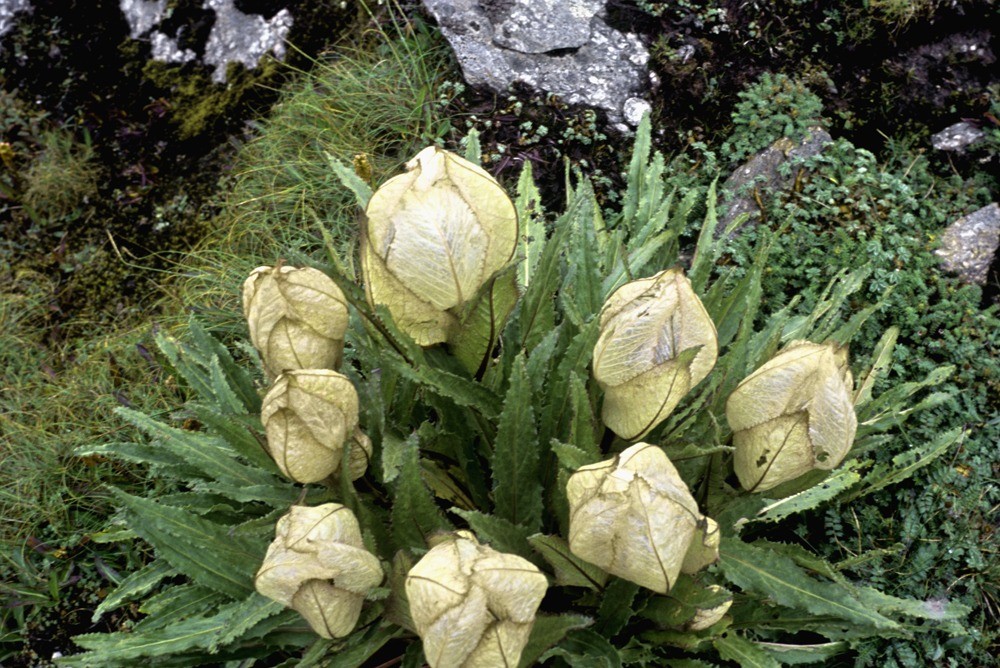
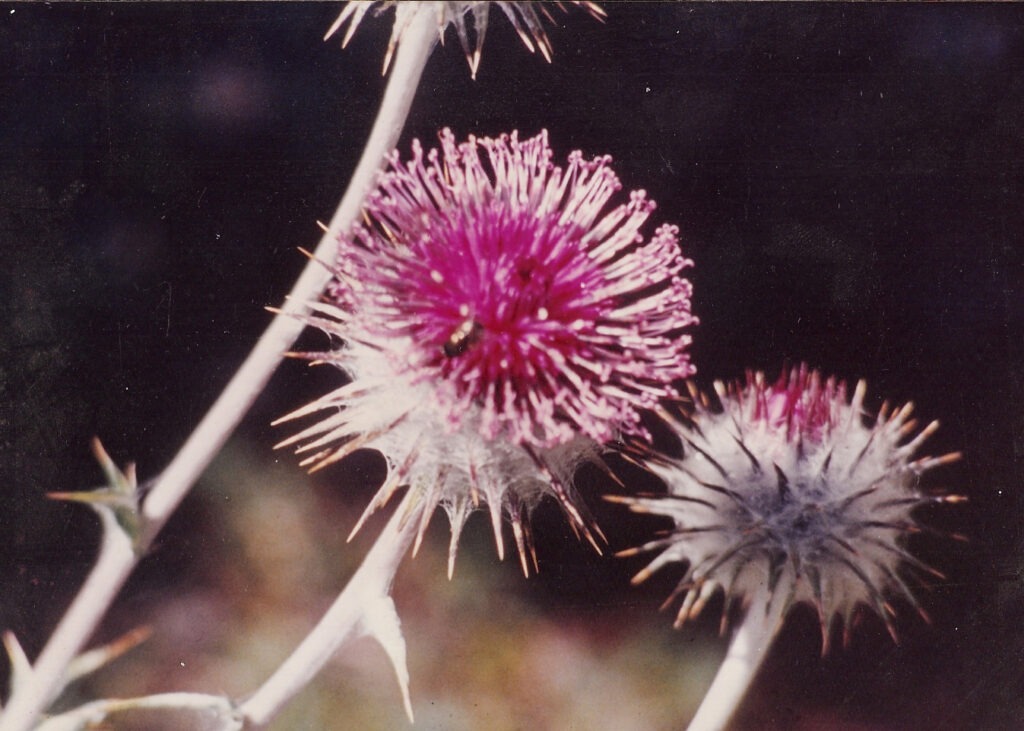
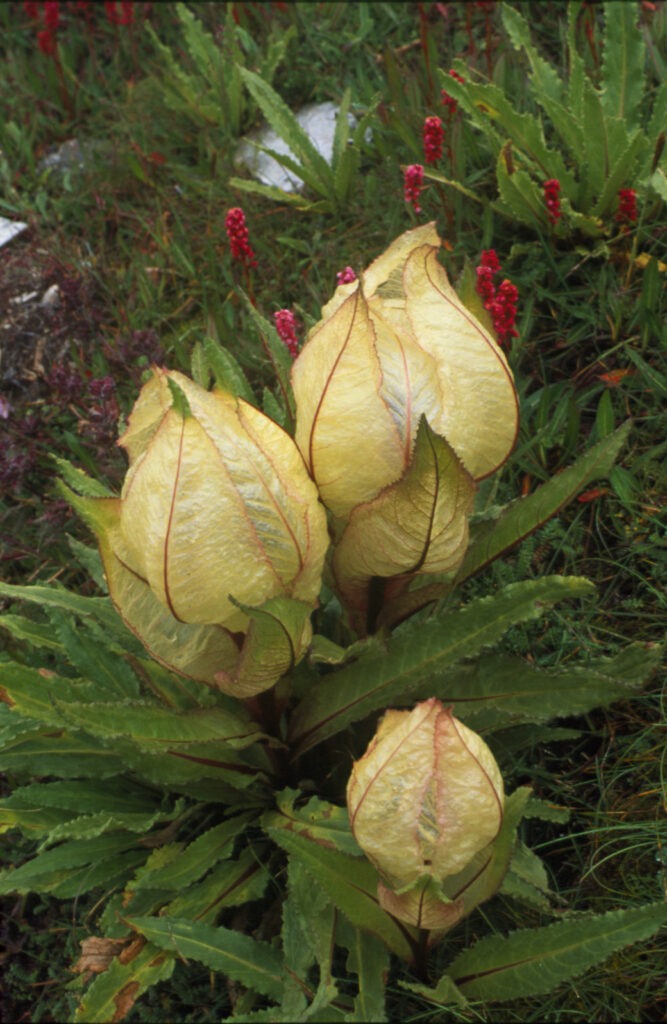
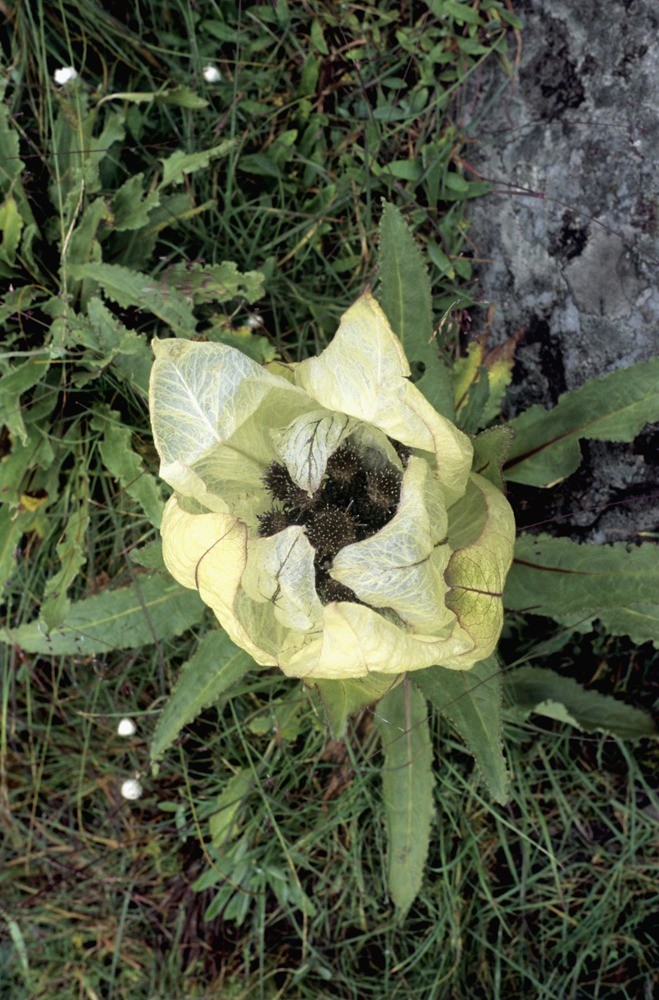
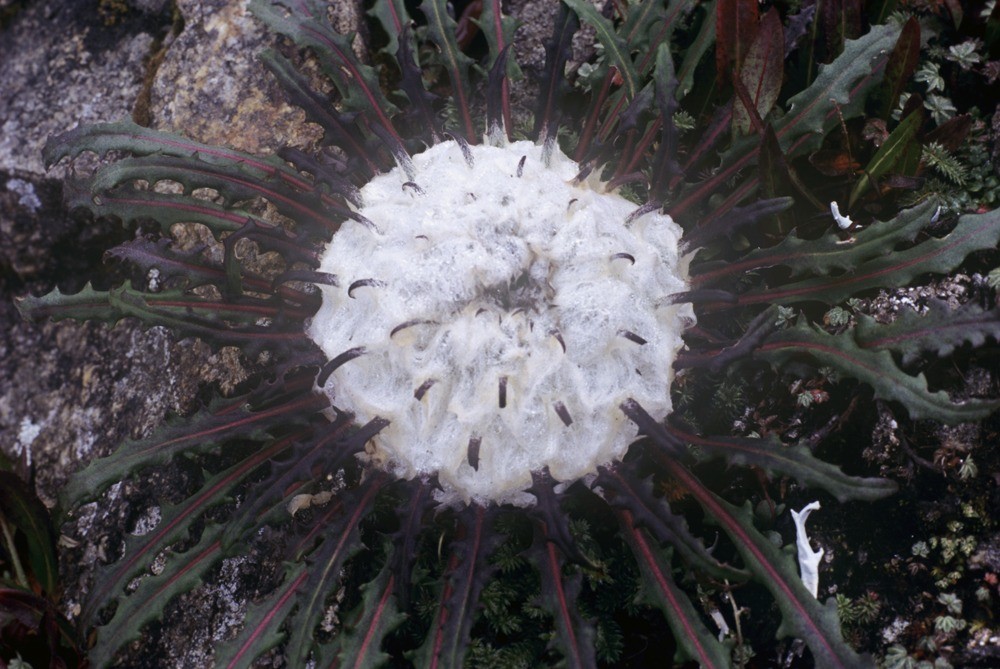
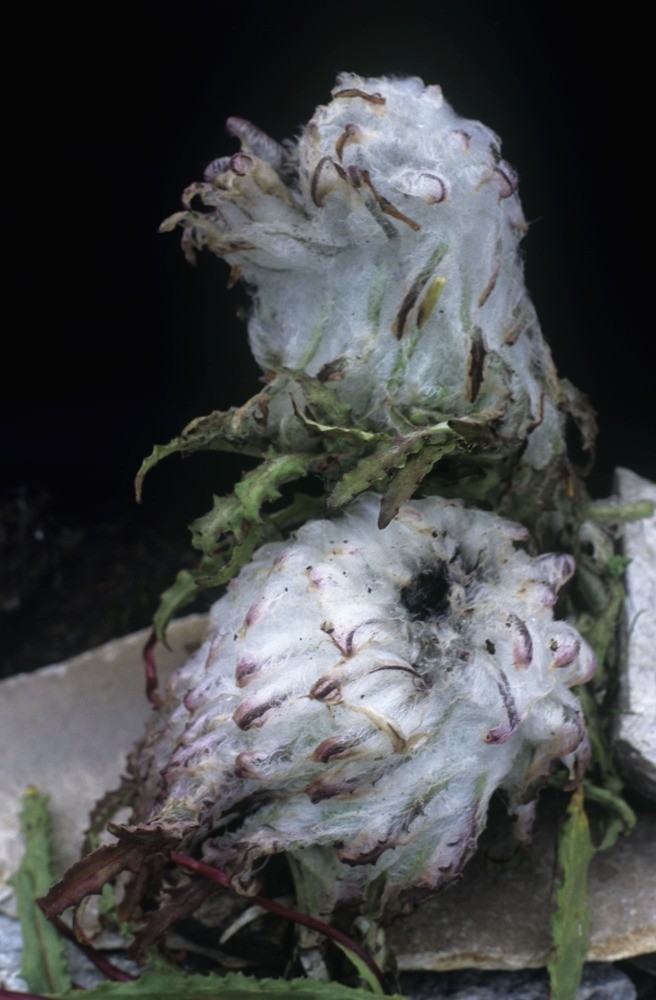


Comments are closed.